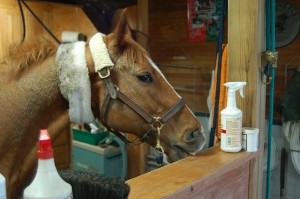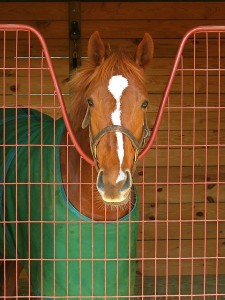Today, most horses are kept in box stalls, which allow horses to turn around, walk several paces, and lie down. However, stalled horses rarely have access to a natural, high roughage diet and are typically fed limited amounts of both high-concentrate food and hay, both of which are usually quickly consumed[1]. These kinds of living conditions can lead to the development of stereotypic behaviours, such as stall walking, weaving, wood chewing, and cribbing.
Racehorses are usually confined to box stalls and are fed high-concentrate diets to supply them with the energy they need to perform. According to Houpt and Waran (2003) restriction of normal social behaviour and the feeding of a low fiber, high grain diet are the two main factors related to the performance of stereotypic behaviours in horses.
Both boredom and frustration can lead to stereotypic behaviours, such as weaving and cribbing, which are both commonly seen in racehorses and many racing stables have weaving bars fitted in the stalls, to try and prevent horses from being able to perform the behaviour [1]. However, horses actually appear to be more stressed when prevented from performing these behaviours, indicating that removing their one way to express their frustration compromises their welfare [1].
Sources
1. Houpt, K.A. and Waran, N. 2003. Horse Welfare since 1950. Pages 207-215 in The State of the Animals II (A.N. Rowan and D. J. Salem, editors). Humane Society Press. New York.


